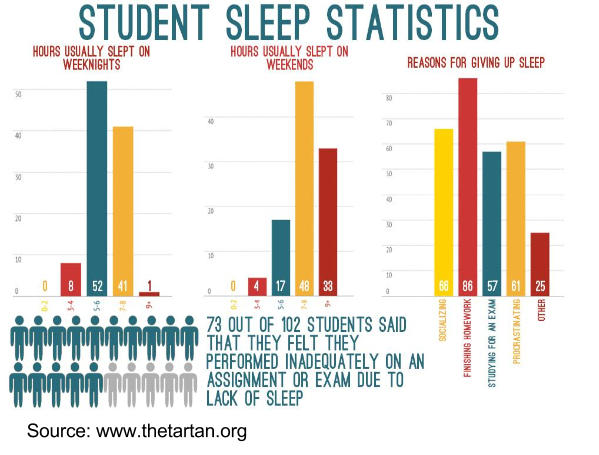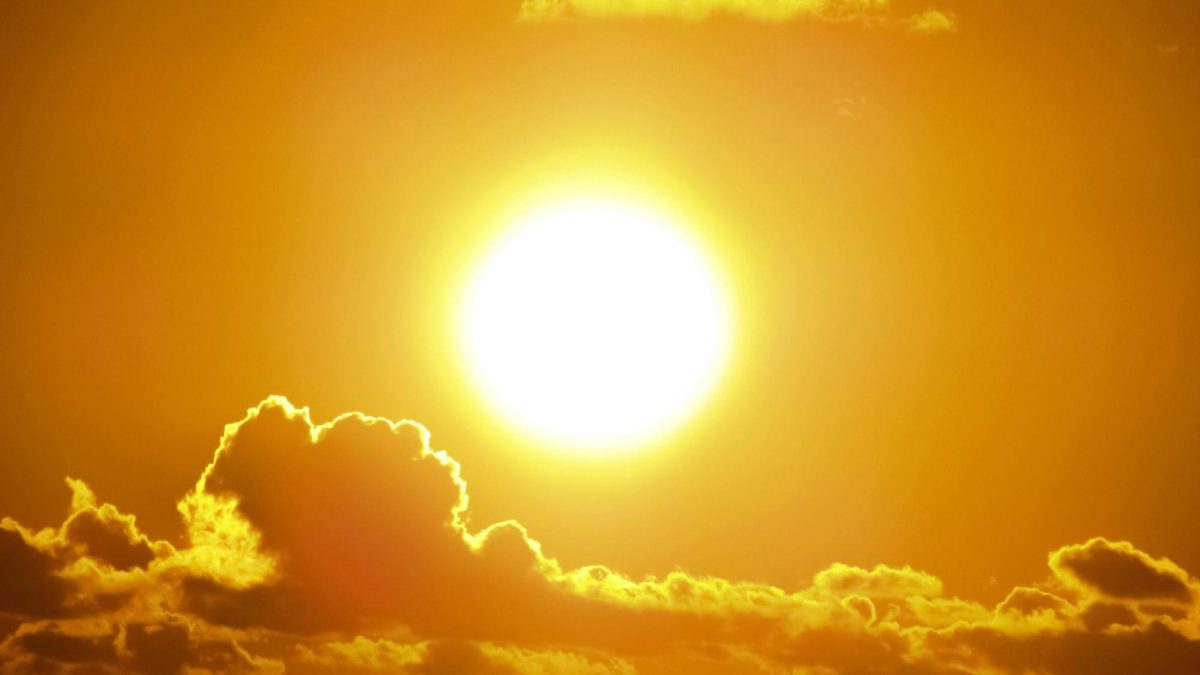We’ve all been there: the alarm goes off at 6:00 on a Tuesday morning, and all you want to do is unplug the alarm and send it flying across the room, turn over and fall back asleep. Instead, you get up and trudge through your morning routine to make it to the bus stop in time to head off to school for a full 7-hour productive, non-stop day. After school, you head home for an hour- often times plus that- of homework, then dinner and other evening duties, plus finding time to socialize with friends and family and finding any scrap of extra time for the things that you like to do in that rare phenomenon called “free time”- of course, that’s extended even later should you have any after-school activities or sport events you’re required for. The time to sleep then normally doesn’t roll around until after 10 o’clock (if you can get to sleep by that point) and then you get up at 6 o’clock the next morning to do it all over again. If this pattern resembles anything like your normal schedule, then you’re only getting a good 8 hours or less of sleep. While this may seem like a decent amount of sleep, do you ever wonder why you still tend to wake up exhausted and draggy the next morning? Two words, dear reader: sleep deprivation. Whaaaaaaaaaaat? But no, you’ll say, I get a “whole” 8 hours of sleep a night. And even if I don’t, a hot shower, coffee, or breakfast wake me up in the mornings. Besides, if I did maybe require some more sleep, where am I going to find the time for it?
First off, what is sleep deprivation, really? It’s got to be more than just a single bad night’s sleep, or feeling draggy in the morning, right? By most sleep specialists’ standards, the condition exists when sleep is insufficient in supporting adequate alertness, performance, and health. There are two separate levels to this disorder: acute- in which there is no sleep or a serious reduction in usual total sleep time, and usually lasts from one to two days- and chronic- where an individual routinely sleeps less than the recommended amount that is necessary for optimal function. Missing this much-needed rest can result in an array of issues and affect someone’s relationships, school performance, mood (and result in a greater chance of mood swings), as well as your complexion, weight, and physical/mental health.
Also very important to note: the standard 8 hours won’t work for everyone. Researchers have found that the different age groups have different recommended sleep amounts, and according to the Mayo Clinic, school-aged children are recommended to get a full 9 to 11 hours of shut-eye every night. With the average school start time around 8:00, most students get up 2 hours before to get through their morning routine and catch the bus, meaning that students would have to be asleep sometime between 7 and 9 o’clock. If that wasn’t hard enough with the amount of after-school activities and sports, teenager’s body clocks run on a different track than that of adults. It’s a biological 3-fold hit. According to Dr. Mary Carskadon, a psychiatric and human behavior at Brown University’s medical school and a leading sleep researcher, the beginning of puberty brings on about an hour and a half postponement of the body’s daily release of melatonin- a hormone that regulates the sleeping and waking cycles. Along with this, the mounting need for sleep as the day wears on tends to slow in adolescence. Simplified: teens don’t feel as tired as early as other age groups, and this trend usually peaks later in this young adult stage; Dr. Carskadon’s findings reflect that girls reach this at 19 and a half years old and boys at nearly 21 years old. Lastly, some studies have found that teens lose a level of their sensitivity towards morning light, which will increase their sense of alertness and cognizance. In contrast, we normally become more respondent to nighttime light, triggering the amount of activity later in the evening.
While sleeping problems for teens may have some biological attributes to thank, there are a few controllable factors as well. Many researchers are now backing the idea that technology could have some influence on the problem, in a phenomenon researchers and teens alike have coined as “vamping”- a reference to the recently popularized creature of the night in movies, books, and television. And this isn’t something that only affects a limited number of adolescents: from studies performed, many have taken to this trend of staying up into the wee hours of the morning to watch videos on YouTube, movies and television shows on Netflix, and chat with friends using various social media sites. In an analysis performed by Dr. Elizabeth Englander, a psychology professor at Bridgewater State University in Massachusetts, 642 college freshmen were interviewed about their usual sleeping habits in high school. Most- about 80% of kids- admitted to being recurrent vampers at some point in their high school career, spending an average of an hour or two awake and technologically-active when their parents believe them to be asleep. Interesting to note is that there were no real trends found in the usual flags like gender, or school grades and behavior- this action seems to be one that is taken by a variety of teens. Danah Boyd, a scholar, researcher, and author of It’s Complicated: The Social Lives of Networked Teens, gave two primary reasons for this tendency. She believes that the first can be attributed to the fact that young people have “a desire to connect and the solitude of the night allows for intimate conversation”, and the second is described as a reaction to “overbooked schedules packed with sports, music lessons and homework that gives them less time to pursue personal interests.” Accompanying that could be the simple fact of peer pressure: with everyone else doing it, why shouldn’t I?
Regardless of the reason, more and more schools across the country have had ideas of delayed start times suggested and even implemented. The results have been overwhelmingly positive. A University of Minnesota study just released last year- in which data was collected from over 9,000 students- concluded that schools that switched to later start times saw an increase in attendance, SAT scores, and academic performance in an array of classes and a decrease in absences, substance abuse, and depression symptoms. Funded by the CDC, this project also found that high schools which started between 8:30 and 8:55 a.m. allowed for about 66% of students to get closer to the recommended amount of sleep, while those that started at 7:30-7:45 a.m. saw an average of only 34% of students getting this much sleep. Shifting along with these start times were the amount of car crashes of young people, as one of the observed high schools had a 70% decrease in their frequency once the start times were delayed. (Which makes sense, as a lack of sleep can attribute to an impaired judgment and decision-making skills.)
Whether St. Mary’s County will ever impose a similar delayed start time is hard to tell- with an 8:00 beginning of the day, we’re better off than some schools. However, this fails to disregard the fact that most students could do with an increased amount of sleep. Until then, what can be done is what many researchers have suggested: putting down the technology an hour or so before actually trying to fall asleep, as this has been shown to gain people almost a full hour more of sleep a night, and professionals are advising parents to allow for more time for friends and activities outside of the realm of academics for their children, in the hopes that this will curb some of the late-night appeal that technology and communication with others hold for teens. In the words of English dramatist Thomas Dekker: “Sleep is that golden chain that ties health and our bodies together.” If this is of any truth, most high schoolers are surely in need of a check-up and some mending.








